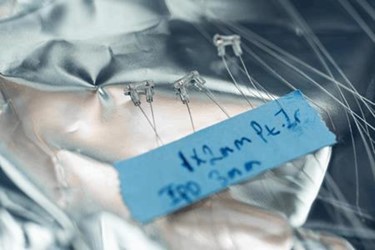New Technology Targets Vagus Nerve Stimulation To Treat Inflammatory Disease

New technology from the Georgia Institute of Technology (Georgia Tech) targets vagus nerve stimulation (VNS) to improve its therapeutic benefit as a treatment for chronic inflammatory disease. By simultaneously stimulating the part of the nerve that tempers the immune system while blocking a potential immune response, researchers believe they can limit unwanted side effects of VNS without surgical intervention.
The vagus nerve facilitates communication between the brain and visceral organs and is necessary for bodily functions that monitor and regulate physiological balance, such as pulse, respiration, and limiting overactive immune responses. Immune diseases — such as Crohn’s, rheumatoid arthritis, and irritable bowel disease — are caused by a hyperactive immune system that targets not only pathogens, but healthy tissue as well. Though progress has been slow, researchers believe that VNS could provide a minimally invasive therapy for these conditions, according to IEEE Spectrum.
A team of researchers from Feinstein Institute for Medical Research (FIMR), University of Amsterdam, and SetPoint Medical recently published results from the first study of VNS in human patients with rheumatoid arthritis who had failed to respond to pharmaceutical interventions. Their results demonstrated “proof of mechanism” of the treatment that “attenuates disease severity.”
According to Georgia Tech scientists, the promise of VNS therapy as a treatment for inflammatory disease has been hampered by researchers’ inability to target the stimulation. The same nerve that communicates the need to limit immune response can also trigger the immune system, which defeats the purpose of the stimulation, explained Georgia Tech bioengineering graduate student Yogi Patel, in a press release.
“The original studies in animals on the anti-inflammatory benefits of vagus nerve stimulation resorted to nerve transections [vagotomies] to achieve directional stimulation as well as boost effectiveness of nerve stimulation,” said Patel. “But cutting the vagus is not clinically viable — due to the multitude of vital bodily functions it monitors and regulates.”
A team of Georgia Tech scientists, led by Robert Butera, has been working on ways to better target nerve stimulation and has filed patents of technology that can selectively block unwanted stimulation while boosting desired signals.
“We use an electrode with kilohertz frequency that blocks unwanted nerve conduction in addition to the electrode that stimulates nerve activity,” explained Butera, principle investigator of a recent study published in Scientific Reports. “We’ve arranged the two near each other, so the blocking electrode forces the stimulation from the stimulating electrode to only go in one direction.”
This approach, said Patel, works as a “virtual vagotomy” that “provides the same therapeutic benefit, but it also immediately reversible, controllable, and clinically feasible.” Butera added that this technology could be easily incorporated into existing implantable devices that stimulate the vagus nerve.
VNS has the clinical potential to treat a wide variety of diseases and conditions, including heart failure, hypertension, epilepsy, and psychological conditions. Recent research from FIMR suggests the possibility of a “neural tourniquet” that can staunch bleeding from internal or external hemorrhaging.
The Defense Advanced Research Projects Agency (DARPA) recently launched ElectRx, a program that would fund research projects devoted to developing “electroceuticals,” implanted devices designed to take the place of pharmaceutical treatments. Three of the first seven initial projects are researching the clinical potential of VNS.
